Abu Simbel from Aswan: Is It Really Worth It?
Planning a day trip to Abu Simbel from Aswan in 2025? Here’s everything you need to know to visit this unforgettable temple in Egypt
The first time I saw a photo of Abu Simbel, I honestly thought it had to be fake. Four massive statues of Ramses II, carved directly into a cliff and staring across the desert? It looked like something from a fantasy movie — not a real place you could actually visit.
But it’s real. And if you’re already in Aswan, you’re in the perfect spot to go see it for yourself.
Yes, it means waking up painfully early. And yes, the desert drive is long (and kind of boring). But is Abu Simbel worth it? Absolutely. Alongside the Pyramids of Giza, this is one of the most jaw-dropping and important ancient sites in all of Egypt.
In this guide, I’ll show you exactly how to visit Abu Simbel from Aswan, why it’s 100% worth the effort, and everything I wish I’d known before going — so you can plan it right the first time.
This blog post is all about visiting Abu Simbel from Aswan
Table of Contents
Visiting Abu Simbel from Aswan
Built by Ramses II over 3,000 years ago, Abu Simbel is famous for its towering statues, intricate carvings, and the jaw-dropping rescue that saved it from the rising waters of Lake Nasser in the 1960s. It’s a UNESCO World Heritage Site and without a doubt, one of the most iconic landmarks in Egypt.
Here’s why visiting Abu Simbel from Aswan is 100% worth the early wake-up call:
- Two temples, one unforgettable site: You’ll see both the Great Temple of Ramses II and the smaller Temple of Nefertari—one of the few temples in Egypt dedicated to a queen.
- Massive statues: The seated figures at the entrance are over 20 meters tall and carved straight into the cliff.
- Built for the sun: On just two days a year—February 22 and October 22—the sun shines into the sanctuary and lights up three of the four statues, leaving only the god of darkness in shadow.
- Moved to survive: In the 1960s, the entire complex was cut into over 1,000 blocks and relocated to higher ground to save it from flooding. The fact that the solar alignment still works is mind-blowing.
- Incredible detail: Even after thousands of years, the carvings are remarkably well-preserved. In some corners, you can even spot hints of the original paint.
- Easy day trip from Aswan: Whether you take a private car, fly, or join a group tour, Abu Simbel from Aswan is one of the most unforgettable experiences in Egypt.
Even if you’ve already seen stunning Egyptian temples like Philae or Kom Ombo, Abu Simbel is still a must. It’s one of my top reasons to visit Egypt—and if I could, I’d go back in a heartbeat.
Best Time to Visit Abu Simbel from Aswan
Opening hours: 6:00 AM – 5:00 PM
As one of Aswan’s top attractions, Abu Simbel can get crowded — even during Egypt’s off-season. Most tour groups arrive between 7:00 and 8:00 AM, so if you’re hoping for a peaceful, awe-filled moment in front of the statues, timing really matters.
Here are the best ways to beat the crowds:
- Arrive before 6:00 AM: Yes, that means leaving Aswan around 3:00 AM. Painful? A little. But standing in front of the temples in the soft morning light, with barely anyone around, is totally worth it. The cool air helps, too.
- Visit at midday: If you leave Aswan around 8:00 AM, you’ll arrive around 11:00 or 12:00 PM—after the big groups have cleared out. It’s quieter, but it’s also blazing hot and there’s barely any shade.
- Stay overnight in Abu Simbel: The most relaxed option. Explore at sunset, return for sunrise, or even catch the Sound & Light Show in the evening. Just note that accommodations are limited (but I’ll share a few options below!).
I’ll be honest—this was the one part of my trip I didn’t plan perfectly. My family vetoed the 3:00 AM wake-up, so we arrived around 9:00 AM. It wasn’t nearly as crowded as Edfu Temple, but I could tell I’d missed that quiet, golden-hour magic everyone talks about.
Pro Tip: While temple interiors close at 5:00 PM, guests staying for the light show are usually allowed to linger outside. If golden-hour photos without the crowds are on your wishlist, this is your moment.
How to Get from Aswan to Abu Simbel
Abu Simbel is located about 280 km (174 miles) south of Aswan, near the Sudanese border. There are five main ways to get there, depending on your travel style, budget, and how early you’re willing to wake up.
1. Private Tour (Most Comfortable – My Pick!)
This is how I visited Abu Simbel from Aswan, and honestly, I wouldn’t do it any other way. My guide from Medjet Travel picked me up bright and early in a comfy, air-conditioned car—complete with snacks, water, and stories about Ramses II to pass the time.
The drive takes about 3.5 to 4 hours each way and includes a few routine police checkpoints. I felt totally safe—and even dozed off for part of it.
Expect to pay around 2,700–3,800 EGP ($53–74 USD), depending on whether you book online, through your hotel, or negotiate directly. Many hotels like the Sofitel Old Cataract or Movenpick Resort can help arrange a private driver.
Bonus Tip: Technically, you can rent a car and drive yourself, but unless you’re super confident driving in Egypt, I wouldn’t recommend it.
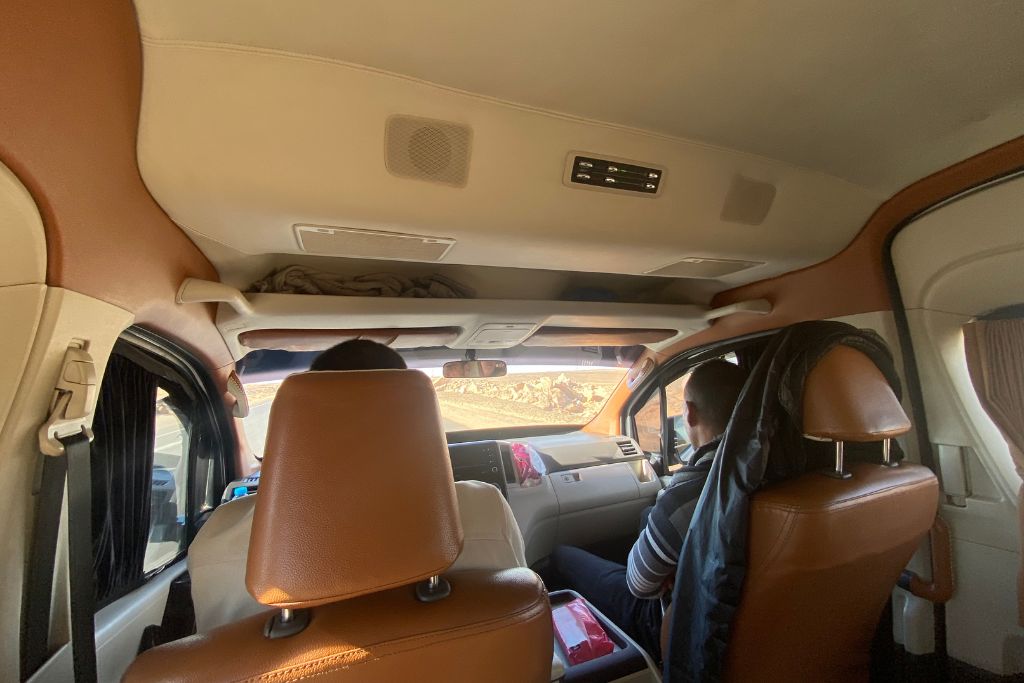
2. Group Tour (Most Popular & Budget-Friendly)
If you’re traveling solo or on a tighter budget, group tours are a solid way to get to Abu Simbel from Aswan. Most leave around 4:00–4:30 AM and return around midday.
Abu Simbel Tours typically include hotel pickup, round-trip transport, and sometimes a guide. Just double-check if the entrance ticket is included—it’s often not!
Expect to pay 1,500–2,000 EGP ($30–40 USD). I recommend this GetYourGuide tour, which includes hotel pickup and free cancellation.
3. Public Bus (Cheapest Option)
Yes, there’s a local bus! It leaves Aswan around 8:00 AM and arrives in Abu Simbel by 12:30 PM for just 100 EGP (~$2 USD). It’s air-conditioned and open to tourists, but there’s a catch: the return bus leaves at 1:00 PM. That gives you maybe 30 minutes at the site.
Some travelers stay overnight or find a shared taxi for the return. If you’re curious, Lisa and Pol’s blog breaks down the whole experience really well.
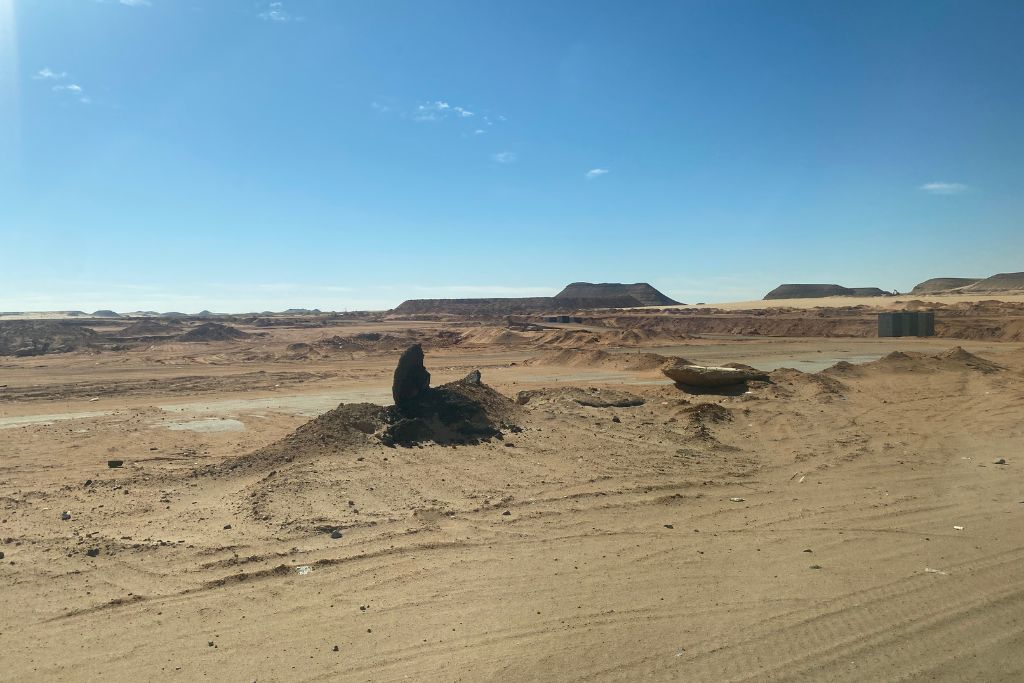
4. Flight with EgyptAir (Fastest Option)
Short on time or hate long car rides? EgyptAir offers 45-minute flights from Aswan to Abu Simbel most days (except Sundays), usually between 7:30 AM and 1:30 PM. Round-trip tickets start at around $100 USD.
At Abu Simbel airport, a free shuttle (look for “Happy Year Transport”) takes you to the temples in about 5 minutes—or you can walk or grab a taxi.
Extra Tip: There are no direct flights to Abu Simbel from Cairo or Luxor—you’ll need to connect through Aswan. I used Skyscanner to find the best options and prices, and it made booking super easy.
5. Nile Cruise (Most Luxurious Option)
A Nile cruise is one of the best things to do in Egypt. You’ll spend 3 or 4 nights sailing between Aswan and Luxor, stopping at stunning temples like Kom Ombo and Edfu. Some itineraries even include a day trip to Abu Simbel by luxury bus.
Want something a little different? A Lake Nasser cruise explores Egypt’s quieter southern sites and often ends with a guided visit to Abu Simbel. It’s slower, scenic, and perfect if you’re after fewer crowds and a more relaxed vibe.
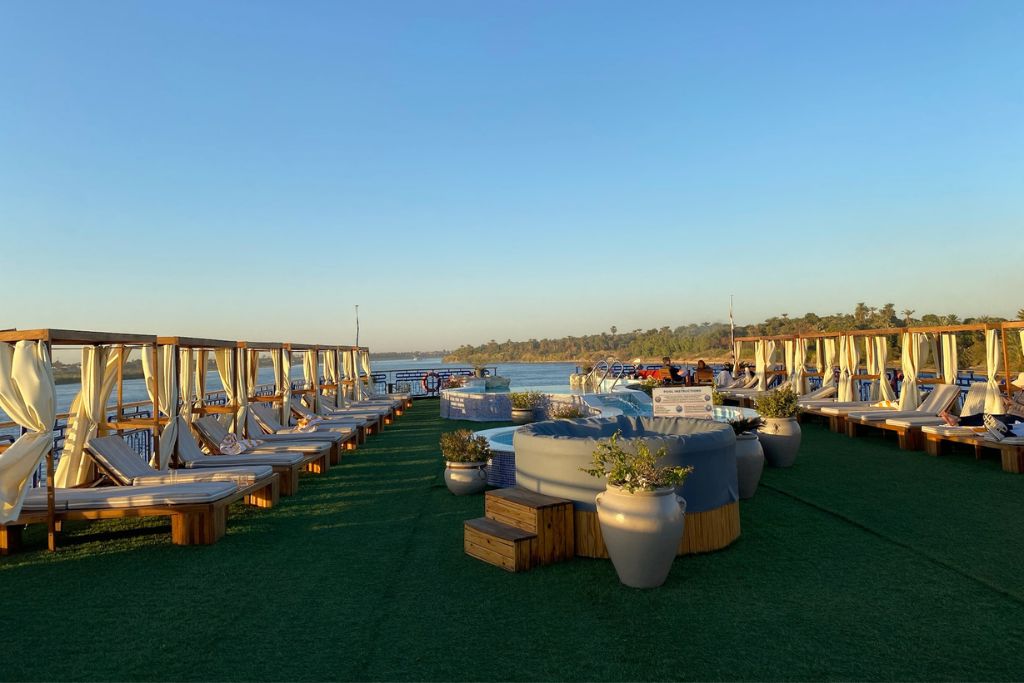
What to See at Abu Simbel Temple in Egypt
From hidden chambers and traces of ancient paint to one of the most epic rescue missions in history, here are the top things to see and do when visiting Abu Simbel from Aswan.
1. The Visitor Center & Abu Simbel’s Relocation Story
Before heading to the temples, don’t skip the small visitor center near the entrance. It features a short film and a scale model that explain how Abu Simbel—built by Ramses II over 3,000 years ago—was almost lost forever after the creation of Lake Nasser.
During the 1960s, in one of the most ambitious UNESCO rescue missions ever, the entire complex was cut into over 1,000 blocks and moved 65 meters higher and 200 meters back. Some of those blocks weighed more than 30 tons!
Fun Fact: Spain helped with the relocation, and Egypt later gifted them the Temple of Debod in Madrid. I used to pass it thinking it was just a random monument—now I know the full story!
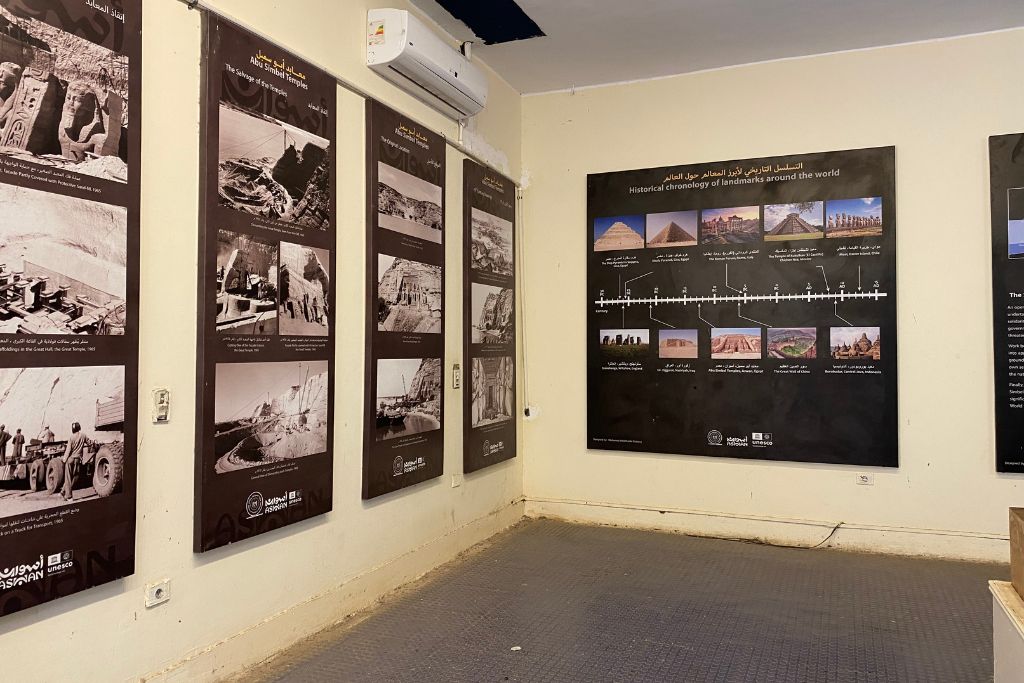
2. That First Glimpse of Abu Simbel
After a short walk, you round a bend—and there they are. Four colossal statues of Ramses II, carved directly into the cliffside, looking out over the desert toward Lake Nasser.
He built this temple to impress travelers arriving from Nubia (modern-day Sudan)—and let me tell you, it still works. I think I took 100 photos before I even stepped inside.
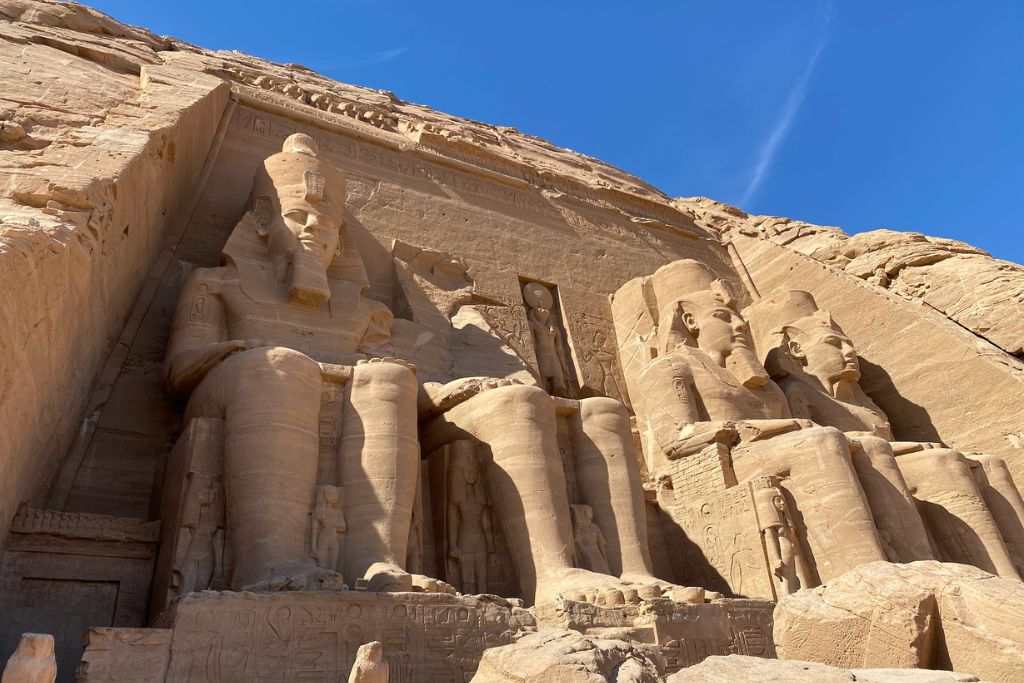
3. Inside the Great Temple
Once you’ve soaked in the view, head into the Great Temple of Ramses II. A wide corridor leads you past eight Osirid statues—all with Ramses’ face—and walls covered in scenes of gods, offerings, and battles.
My guide pointed out the famous Battle of Kadesh, where Ramses is shown winning in dramatic, self-glorifying fashion. Let’s just say he really knew how to tell his version of history.
Bonus Tip: If the main hall feels crowded, duck into one of the side rooms. I had one completely to myself, and it was one of my favorite peaceful moments at Abu Simbel from Aswan.
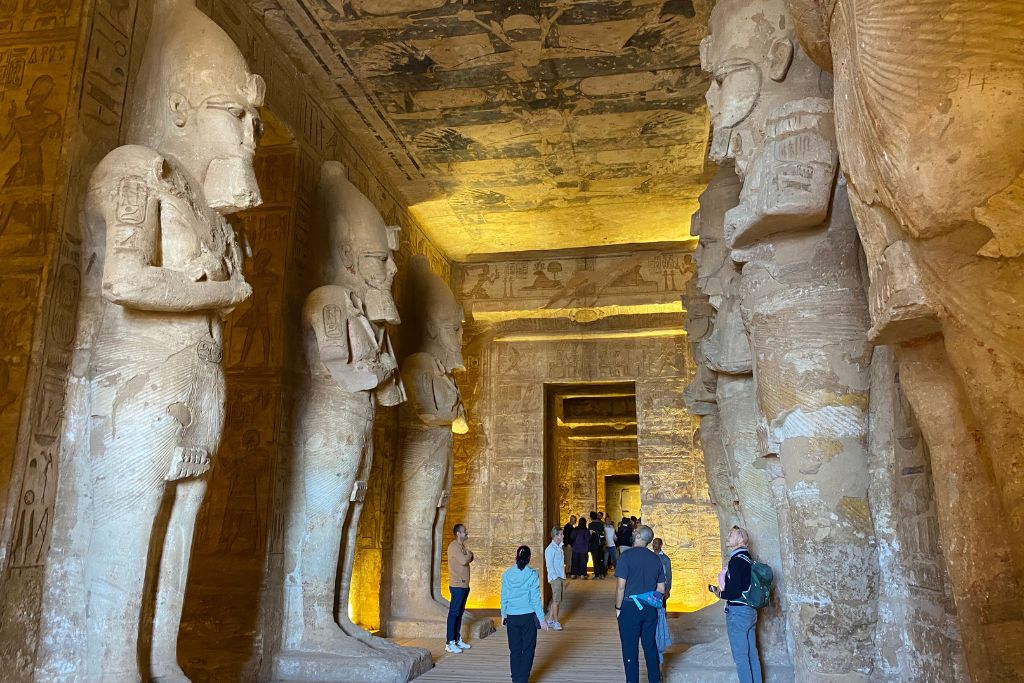
4. The Solar Alignment Sanctuary
At the very back of the temple, you’ll find the sanctuary—home to four seated figures: Amun, Ra-Horakhty, Ptah (god of the underworld), and Ramses himself. Yes, Ramses considered himself divine.
Twice a year—February 22 and October 22—the rising sun aligns perfectly and lights up the sanctuary, illuminating all the statues except Ptah, who remains in shadow. These dates are believed to mark Ramses’ birthday and coronation.
And the wildest part? This alignment still works even after the temple was relocated. Incredible.
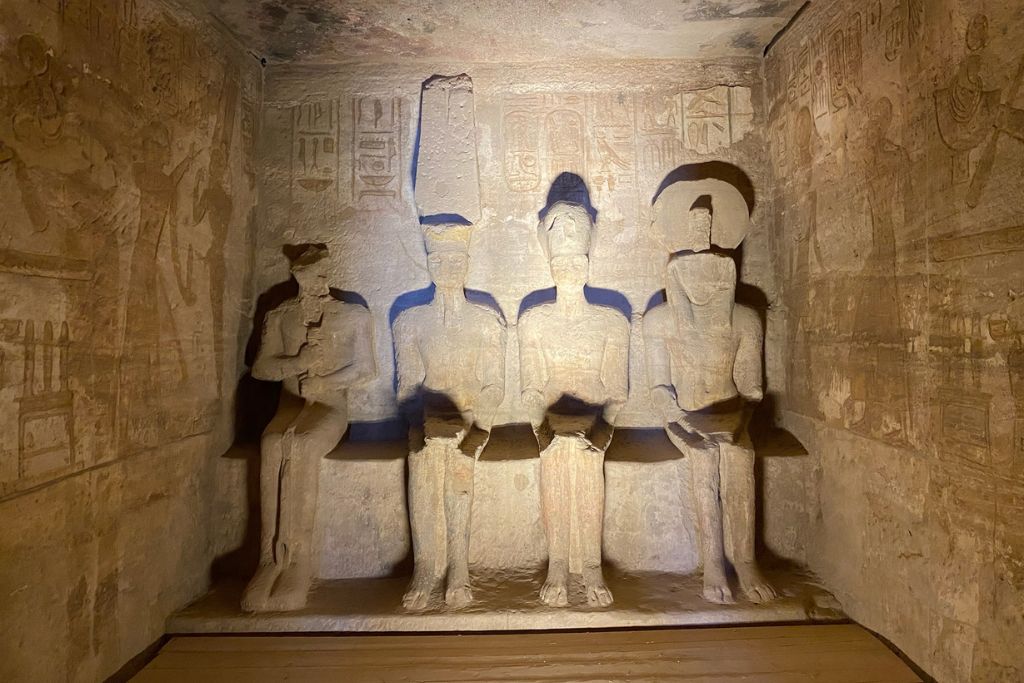
5. The Temple of Hathor (Nefertari’s Temple)
Just 150 meters from the main temple is the Temple of Hathor, built by Ramses II for his favorite wife, Queen Nefertari. It’s smaller, quieter, and absolutely beautiful.
The façade features six statues—four of Ramses and two of Nefertari—all the same height, which is almost unheard of in ancient Egyptian art. A clear sign of how much she meant to him (among his 200+ wives!).
Inside, you’ll see carvings of the royal couple making offerings to the gods, along with faint traces of red, green, and blue paint—a magical reminder that these temples were once bursting with color.
Extra Tip: Much of the damage here came from early Christians, who scratched out what they considered pagan imagery. These carvings have survived 3,000+ years—please don’t touch them!
6. Souvenir Shopping
On your way back to the parking area, you’ll pass a small row of souvenir stalls selling papyrus art, scarabs, mini statues, and scarves.
Prices are higher than in Aswan, so be ready to bargain. I didn’t buy anything (I save my shopping for Khan el-Khalili in Cairo), but the vendors were friendly and not overly pushy—refreshing!
Visiting Cairo next? Don’t miss my 3-day Cairo itinerary — packed with must-sees, travel tips, and favorite local spots.
7. Abu Simbel Light & Sound Show
If you’re staying overnight in Abu Simbel, the Sound & Light Show is a lovely way to end your day. Like the one at Karnak Temple, it tells the story of Abu Simbel with narration, music, and colorful lights projected onto the temple walls.
I didn’t catch it myself, but other travelers said it was surprisingly emotional and worth staying for—even if it’s a bit old-school.
- Showtimes: 8:00 PM & 9:00 PM
- Tickets: 370 EGP (About $12 USD)
- Children (6–12): $11 USD
Pro Tip: Most people head out right after the show. If you hang back a little, you might get the rare chance to see the temples lit up at night, completely crowd-free.

How Much Does It Cost to Visit Abu Simbel?
Here’s a quick breakdown of the typical costs to visit Abu Simbel from Aswan (updated for December 2024):
- Entrance Ticket: 765 EGP (about $15 USD)
- Student Ticket: 388 EGP (around $7.60 USD — valid ISIC card required)
- Photography Permit (for DSLR cameras): 300 EGP
- Electric cart (optional, to/from entrance): 50 EGP
You’ll find the ticket booth right next to the visitor center. Payment is card only, but I still recommend bringing a bit of cash for snacks, tips, or the souvenir stalls outside — they almost never have change!
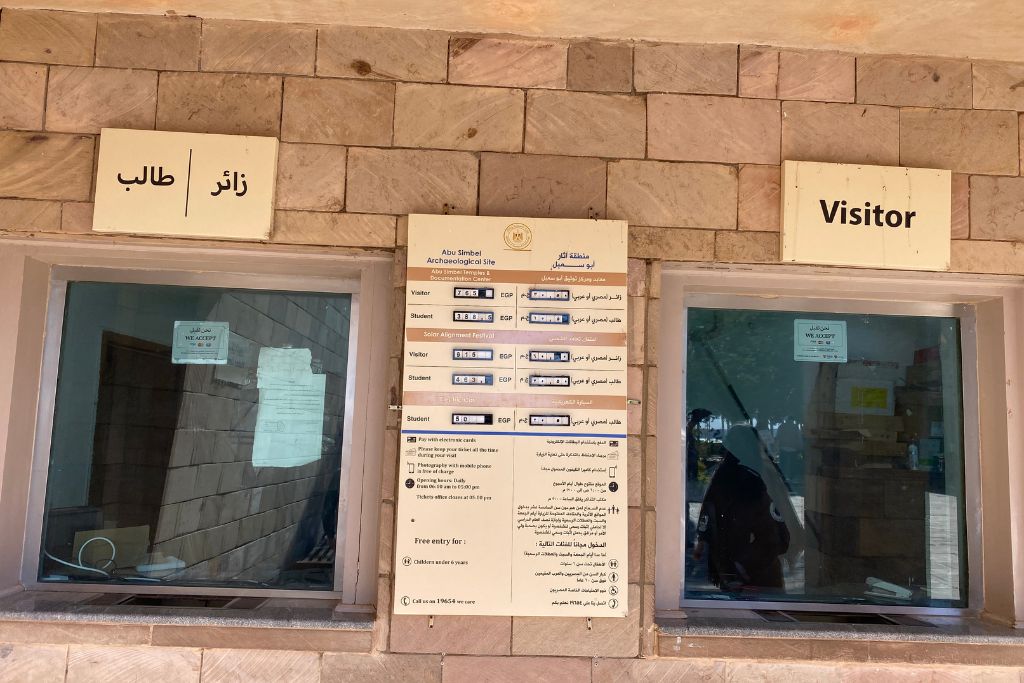
Top Tips for Visiting Abu Simbel from Aswan
Planning a day trip to Abu Simbel from Aswan? Here are my top tips to help you make the most of your visit—especially if you’re going solo or visiting for the first time.
- Book your transport early: Private drivers, group tours, and flights can fill up quickly—especially during peak season or around the famous solar alignment dates (Feb 22 & Oct 22).
- Dress smart: I wore loose cotton pants, a tank top, and draped a scarf over my shoulders. You don’t need to cover your hair, but knees and shoulders should be covered for both respect and comfort in the heat.
- Sun protection is a must: Bring a hat, sunglasses, and sunscreen. There’s almost no shade, and it gets hot quickly — even in winter.
- Pack water and snacks: Some tours provide Egyptian snacks and a bottle or two of water, but not all.
- Carry small cash: You’ll want it for bathrooms, tipping drivers or guides, snacks, and the optional electric cart ride to/from the entrance.
- Use the bathroom before entering: Facilities are located near the ticket office. They’re functional but often lack toilet paper—bring your own tissues just in case.
- Know the photography rules: Phone cameras are fine. DSLR use requires a paid permit, and no flash or tripods are allowed inside the temples.
- Sleeping on the drive? Bring an eye mask, earplugs, and headphones. Personally, I loved watching the desert go by!
- Be patient at checkpoints: The drive includes a few routine stops. It’s completely normal and nothing to worry about.
I personally recommend booking a private tour or joining a reliable Abu Simbel tour from Aswan—especially if you’re traveling solo. It takes the stress out of transportation, timing, and tickets, and a good guide really brings the temples to life.
Bonus Tip: Unlike in Cairo’s mosques, guides aren’t allowed inside the temples themselves. My guide brought a photo book and explained everything outside before I went in — super helpful!
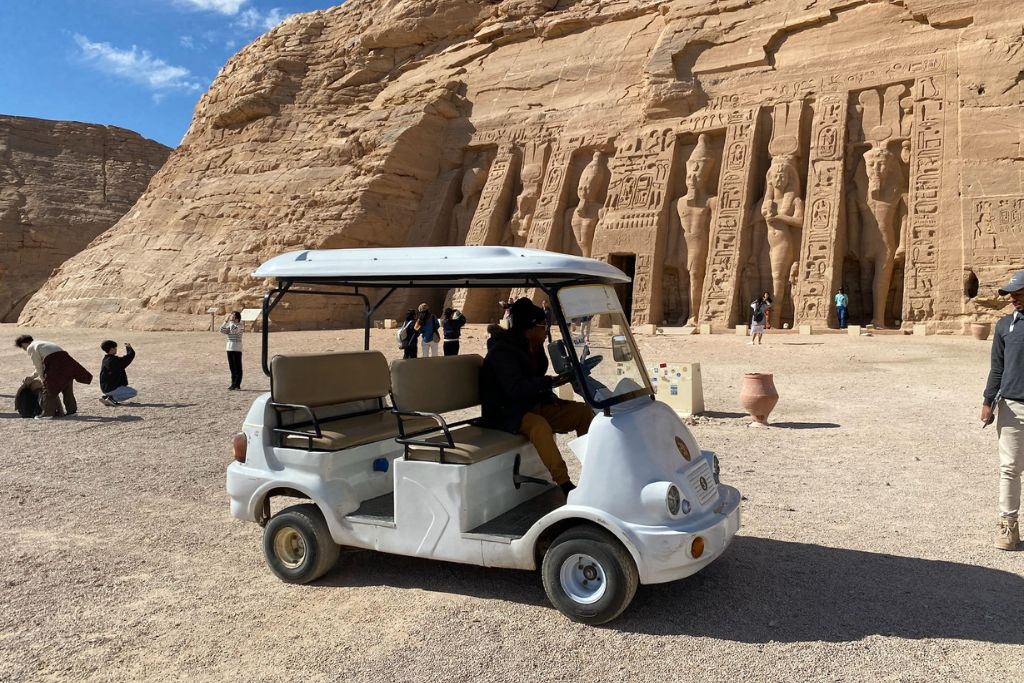
Is Abu Simbel Safe for Solo Female Travelers?
Absolutely — Abu Simbel is safe for solo female travelers. I didn’t visit completely alone, but I truly felt like I could have. The area around the temples is quiet, secure, and very welcoming to tourists.
Most people arrive on a group tour or with a private driver, so even if you’re technically “solo,” you’re never isolated. The road from Aswan to Abu Simbel includes a few police checkpoints, but they’re routine and there for your safety—not something to stress about.
At the site, I felt completely comfortable. The staff, vendors, and even other travelers were respectful, kind, and helpful. I wandered, took photos, and asked questions without a single moment of discomfort.
As with anywhere in Egypt, dressing modestly (covering shoulders and knees), staying aware of your surroundings, and trusting your instincts always helps. But if you’re wondering whether visiting Abu Simbel from Aswan solo is a good idea, my answer is a big yes.
Where to Stay Near Abu Simbel, Egypt
If you want to skip the 3:00 AM start from Aswan—or stay for the evening Sound & Light Show—spending the night near Abu Simbel is a fantastic option. While accommodation is limited, there are a few cozy, locally run places just minutes from the temples.
Here are my top picks for where to stay near Abu Simbel:
- Eskaleh Nubian Ecolodge: A peaceful, family-run ecolodge with charming rooms, warm hospitality, and delicious homemade meals. It’s just a 10-minute walk from the temples, and they even offer sunrise boat rides on Lake Nasser.
- Seti Abu Simbel Lake Resort: A more upscale choice with a pool, lake views, and beautifully landscaped gardens. It’s ideal if you’re looking for a little more comfort and still want to be close enough to walk to both the temples and the Light & Sound Show.
- Kabara Nubian House: A newer, budget-friendly guesthouse with clean rooms, colorful Nubian decor, and lovely hosts. It’s a short walk to the site and offers great value if you’re after something simple and authentic.
Extra Tip: Hotels near Abu Simbel are small and tend to book up quickly—especially around solar alignment dates (February 22 & October 22). If you’re planning to stay overnight, book as early as you can!
Abu Simbel from Aswan: FAQs
Still have questions about planning your Abu Simbel day trip from Aswan? Here are some quick, helpful answers to the things most travelers want to know:
Abu Simbel is famous for its colossal temples, built by Ramses II over 3,000 years ago. Known for incredible carvings and solar alignment, the site was relocated in the 1960s to escape flooding from Lake Nasser—making it both a historical wonder and a modern engineering marvel.
Abu Simbel is located about 280 kilometers south of Aswan. You can get there by private car or group tour (3.5–4 hours each way), public bus (around 5 hours), or a 45-minute flight with EgyptAir. Each option has pros depending on your time, budget, and comfort.
You’ll need at least 1.5 to 2 hours at Abu Simbel to explore both temples without feeling rushed. If you’re into photography or staying for the Light & Sound Show, plan for extra time. The full day trip from Aswan is long—but absolutely worth it.
Technically yes—but not as a day trip. The drive from Luxor to Abu Simbel is about 7 hours one way. A better plan is to head to Aswan first, stay overnight, and then visit Abu Simbel early the next morning when it’s cooler and less crowded.
Absolutely. From the jaw-dropping statues to the beautifully preserved interiors, Abu Simbel is one of Egypt’s most unforgettable sites. Knowing it was cut apart and rebuilt—and still aligns with the sun—makes it even more incredible. If you’re already in Aswan, don’t skip it. It’s truly something special!
Final Thoughts on Visiting Abu Simbel
I won’t lie—waking up at 3:00 AM for a long drive through the desert didn’t sound fun. But the second I stood beneath those towering statues of Ramses II, I knew it was 100% worth it.
Along with Philae Temple and the Grand Egyptian Museum, Abu Simbel was one of the absolute highlights of my Egypt trip. If you’re already in Aswan, don’t overthink it—just go. You won’t regret it.
Have you been to Abu Simbel from Aswan, or are you planning a visit soon? Drop your questions or thoughts in the comments—I’d love to hear from you!

Other Egypt Travel Guides You Might Enjoy:
- Don’t Miss Coptic Cairo: An Ultimate Guide to Egypt’s Oldest Christian Sites
- Where to Stay in Cairo: Best Neighborhoods & Hotels for Every Budget
- Epic Cairo to Alexandria Day Trip: What to See, Do & Eat in Just One Day
- 7 Unique Things to Do in Cairo That Most Tourists Miss
- Is Uber in Egypt Safe? What You Need to Know Before You Ride
Liked This Aswan to Abu Simbel Travel Guide? Pin It for Later!

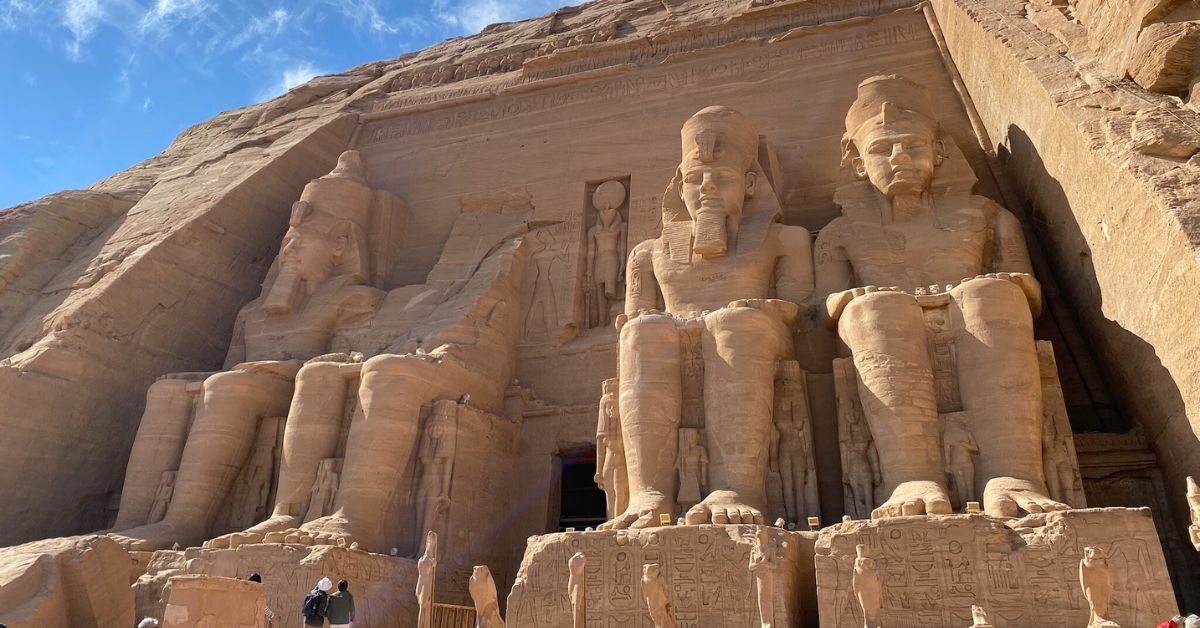


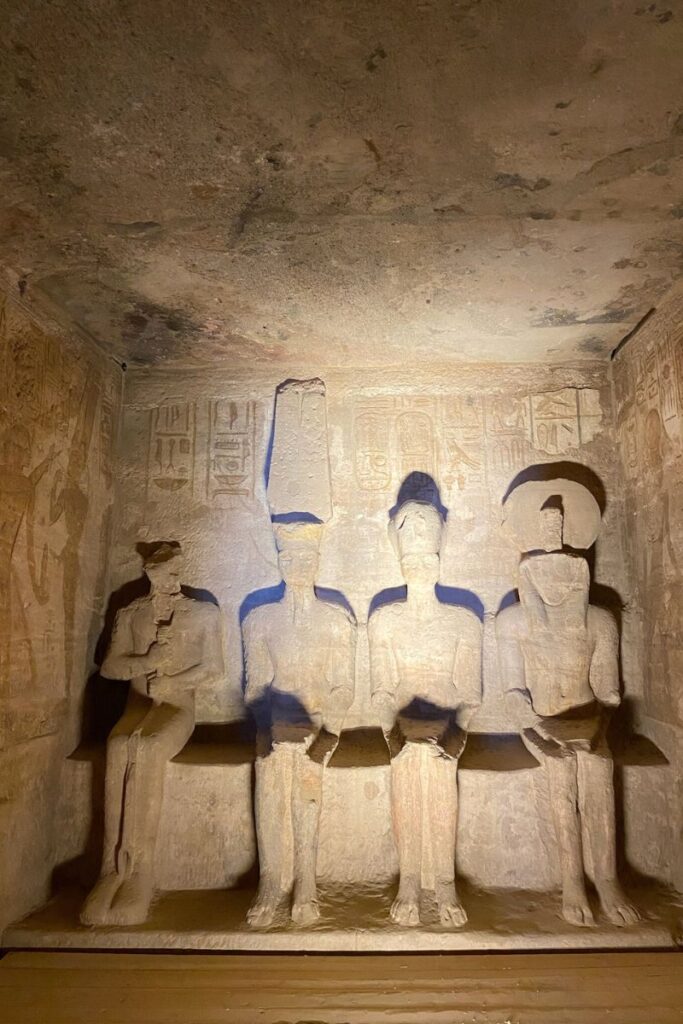

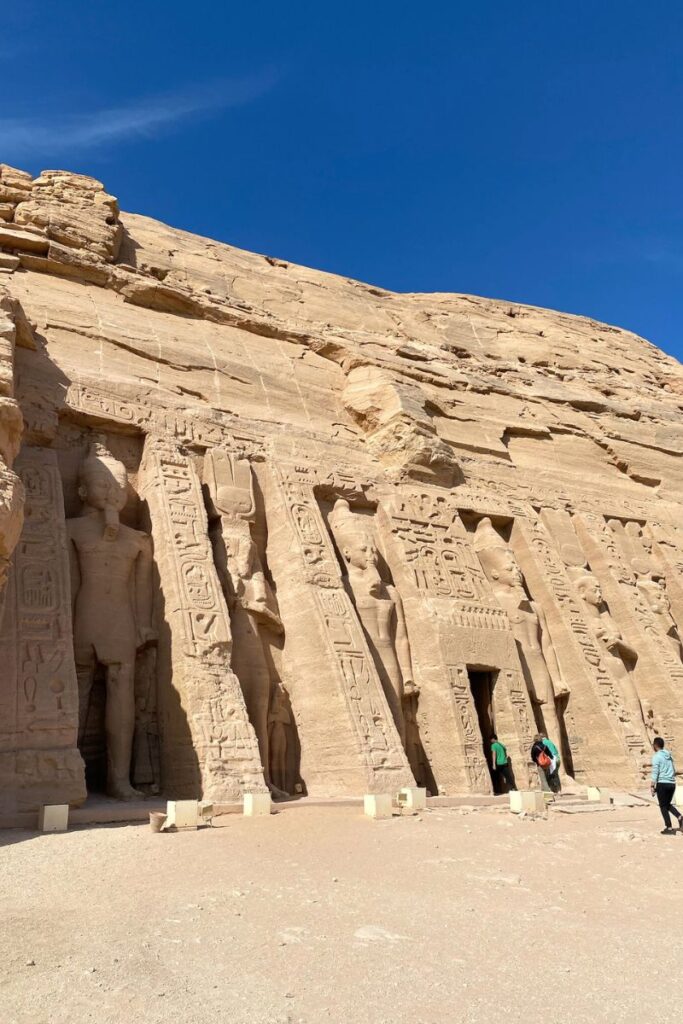
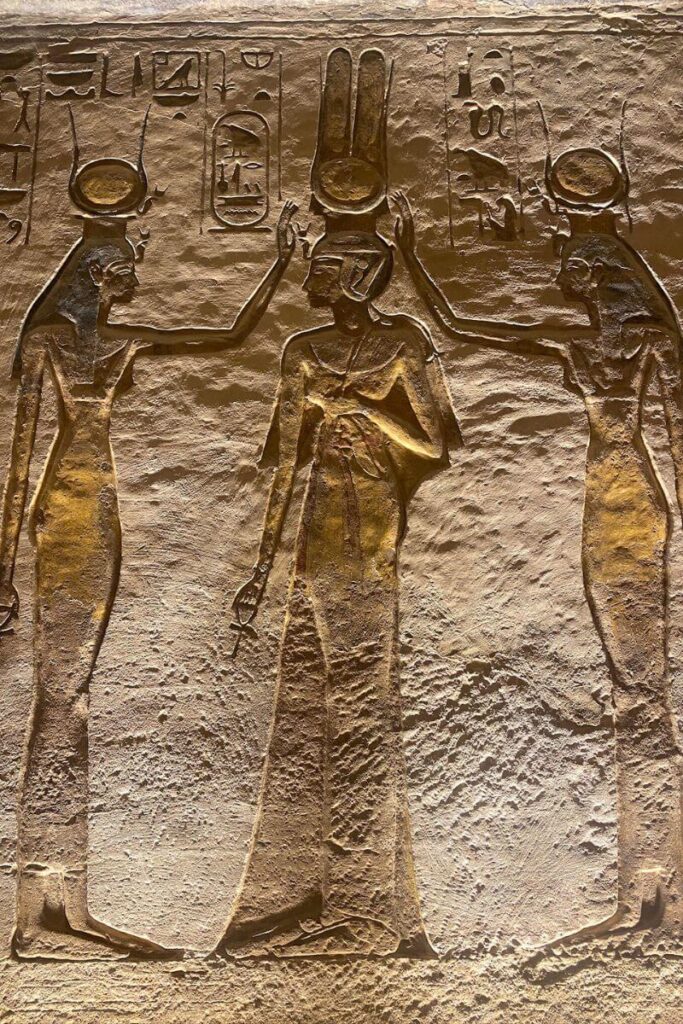
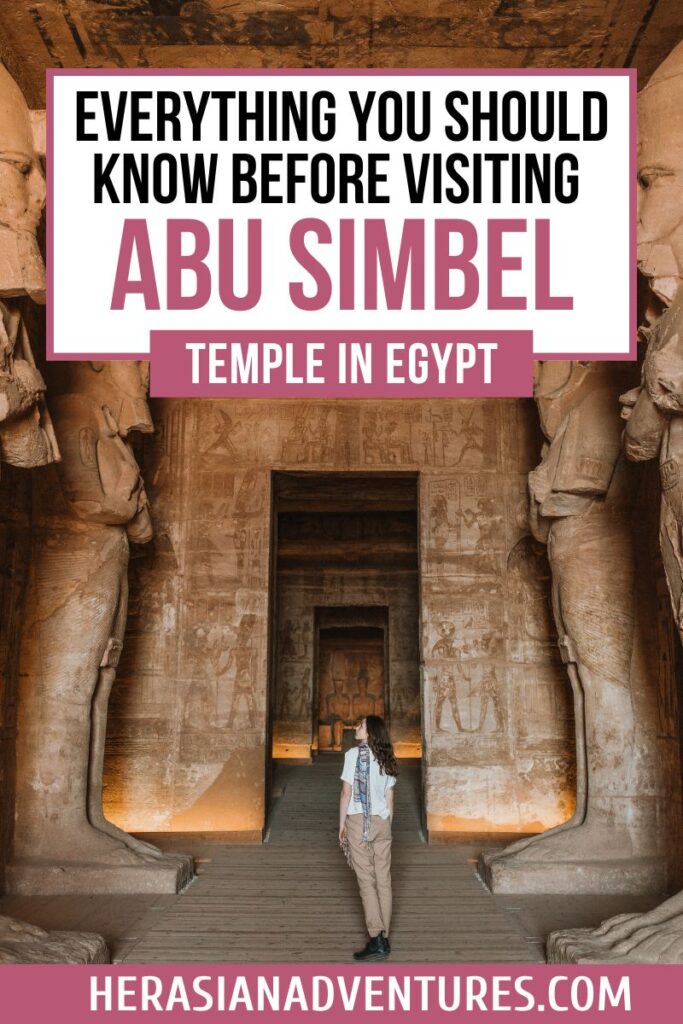
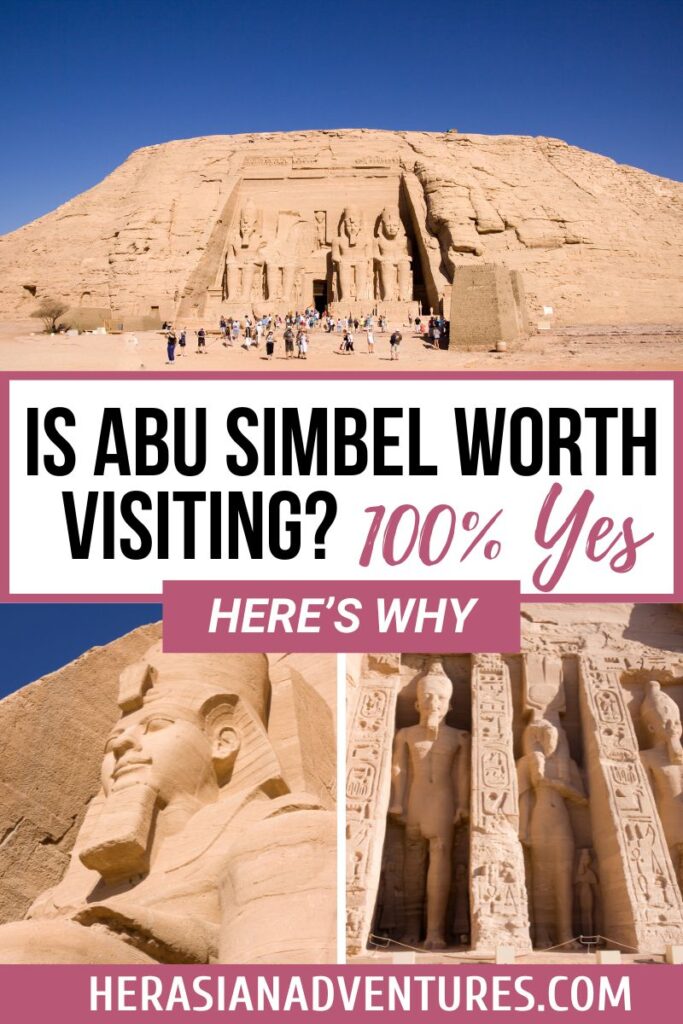
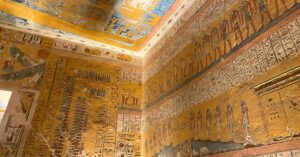
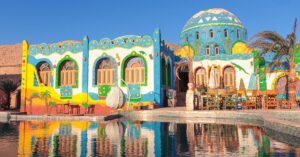
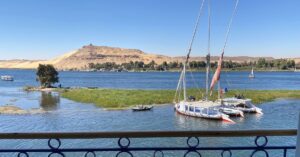
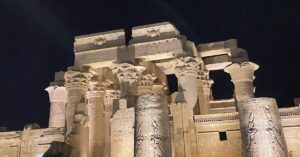
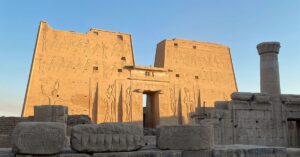
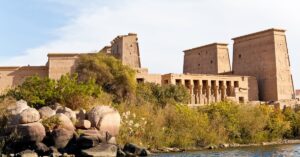
I would LOVE to go to Egypt. Incredible pictures, especially of the Temples! Thanks for sharing.